
Great product descriptions are non-negotiable if you want more people to shop on your ecommerce store. Product images grab attention, and you can even make some sales based purely on your images. But if you really want to take your product pages to the next level, you need relevant, well-structured, and customer-focused product descriptions that sell.
This blog explains just how you can do that. We also include several product description examples to help give you inspiration from real ecommerce businesses.
Why do Product Descriptions Matter?
Product Descriptions Give Context
Product descriptions can add context where a plain product image does not. You’re able to paint the perfect picture in words that somehow make the online shoppers feel like they are living in that future moment if and when they purchase the item.
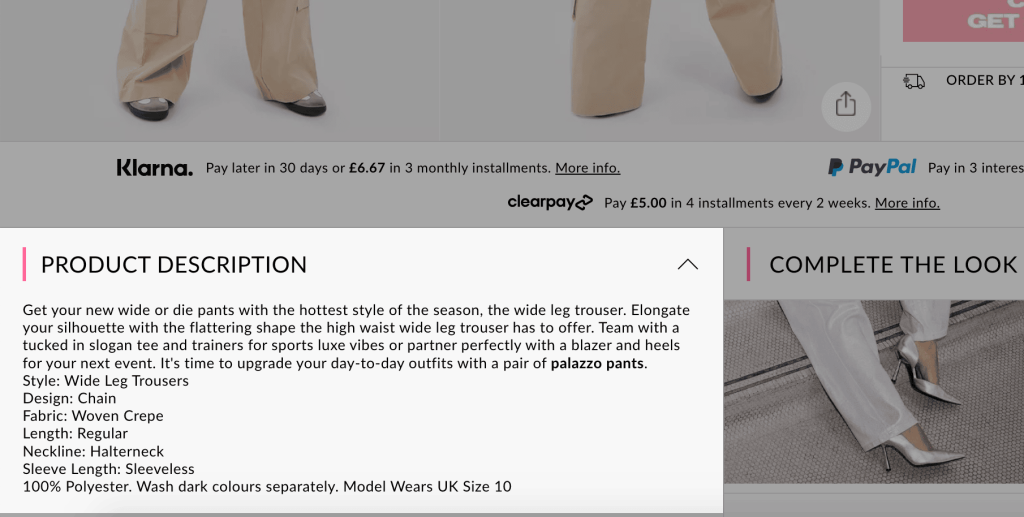
Boohoo does a great job at this. With the above product description, they help their audience picture themselves wearing the pants for both a sporty and dressy occasion.
Product Descriptions Improve SEO
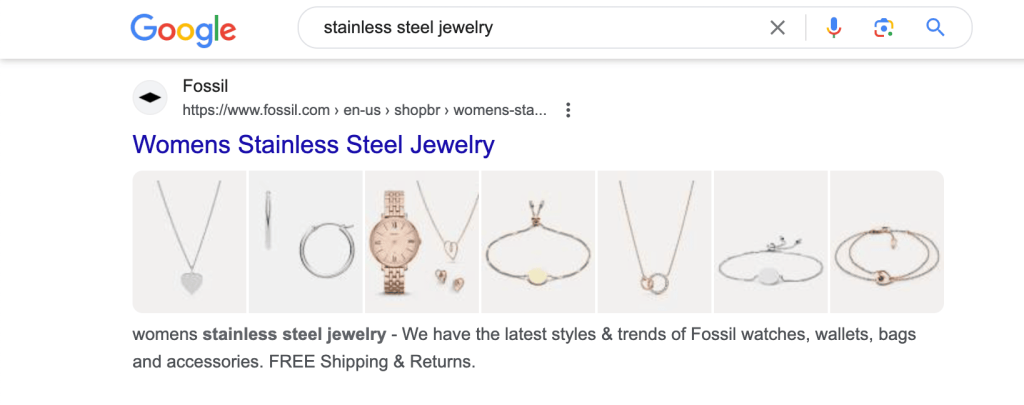
Detailed product descriptions also help you get discovered in search engines. When you optimize your product description by including target keywords, it’s considered a type of on-page SEO (search engine optimization). It helps you rank higher on search engines, which means more traffic and possibly more sales.
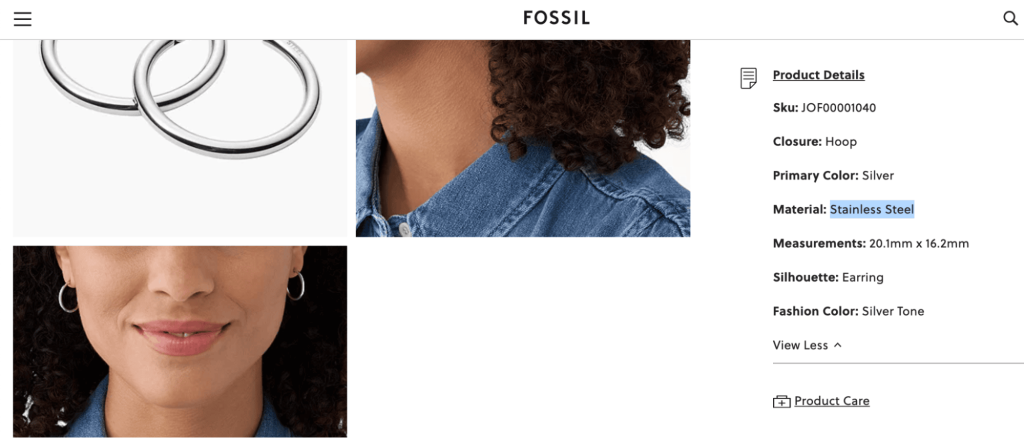
Notice how Fossil includes the keywords ‘stainless steel’ in its product description, which helped its products, including this pair of earrings, appear on the first page of Google’s search results for ‘stainless steel jewelry.’
What makes a winning product description?
Writing a winning product description is not a literary magic thing, and you don’t need to be a top content marketer to pull it off. Three simple things will take you miles ahead of most stores. Ensure your product descriptions are relevant to your ideal buyers, easily readable, and complete with necessary information.
Make it relevant
Relevance is about writing in a way that matters to your ideal customers. The content, language, and tone affect how you make your customers feel when reading a product description. What better way to master relevance than by getting to know what your customers themselves consider relevant?
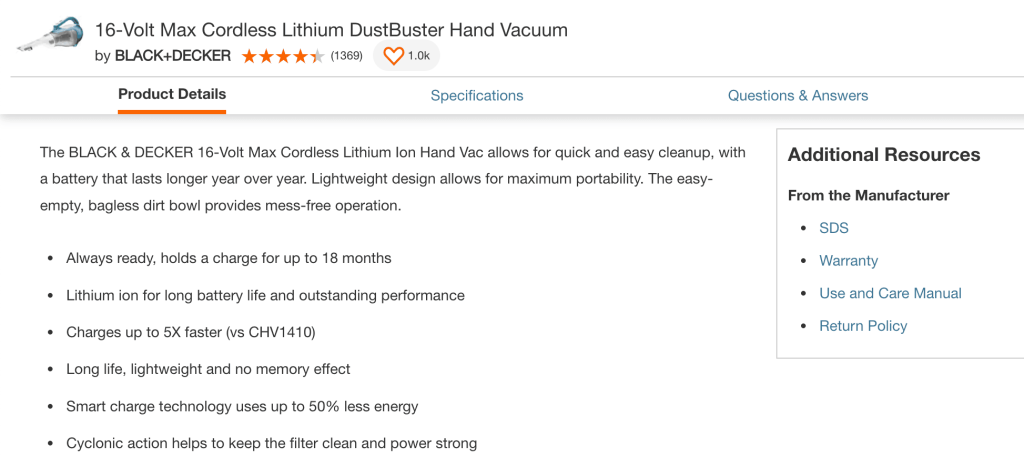
Your ideal customers are their own demographic. They may also fit into other demographics, but all the people who buy from you have one thing in common: They buy from you.
That means your customers share a unique set of wants and needs that your brand fills. They have a problem, and you are the solution to it.
Find out what problems you solve for your customers and how they talk about you and your product. Then take their expressions, and add them to your marketing copy and product descriptions.
To use a well-known marketing term – this is your value proposition. It’s turning your customers’ problem into a solution through what you sell.
How to get this information:
- Buyer reviews are an excellent source. If you already have some, there is no better source of information for your descriptions. This is the fountain of youth for your store.
- Social Media is another source. Find the buyers who interact with you, tag you, and recommend you to their friends. Those are your target buyers. Write down the words they use.
- Hobby/interest sites or Facebook Groups related to what you sell will discuss topics that matter to your buyers. If they are popular with your buyers, they probably know the right words and phrases.
- Message Boards/Reddit – If there are message boards or a subreddit related to what you sell, you are once again getting the words straight from the source.
- Ask your customers directly. They will tell you exactly what you want to know. Offer them store credit for taking part in an even more advanced survey where you get on the phone and pick their brain.
Make it readable
Next step in writing product descriptions that sell is to take the mind-blowing information you just gathered and turn it into something you can use.
Again, this is less about being a fantastic writer and more about forethought and preparation. You are not writing yet. You‘re simply and planning and laying the groundwork.
Firstly, think about what you want to say. Include the information that is most important to your shoppers. Make sure you include the value that your product will add to the buyer’s life. Note that higher price points will need more convincing and nurturing to make the sale.
Then, find your format. Just like you create a template to make your images make sense, you should format your descriptions to make more sense. By breaking information down into natural sections and digestible chunks, you are making your descriptions scannable which means it’s much easier to understand. Mixing sentence-based narrative forms with numbered or bulleted lists is super useful.
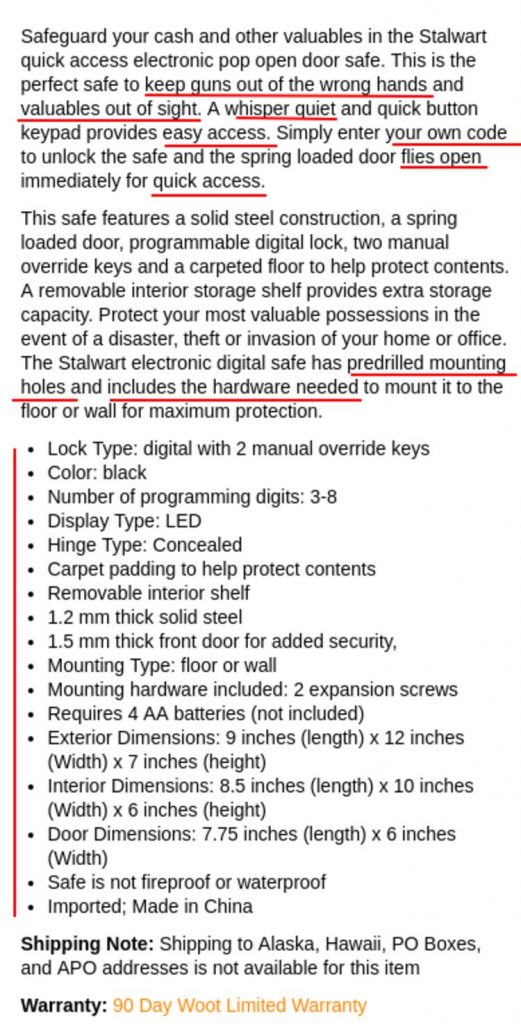
If you have a lot to say, consider breaking it down into multiple sections or even different types of information. The narrative is just sentences broken into tiny, focused paragraphs focusing on only one thing each.
If I were talking about a backpack, here I might talk about the number of pockets, overall size, and how it makes life easier when you can grab your backpack and go. I might talk about how it overcomes this or the problem I faced using other backpacks. The goal is for them to picture this backpack making their lives better.
Specifications lists are important but can also go on for a very long time, so make sure you make it easy to digest.
Make it complete
Having a ‘complete’ product description is the idea that you are giving your customers all the information they need to make a purchase. They don’t need everything thrown in their face; they need just the right amount of information at their fingertips.
Let’s use the backpack example; After I get them to picture how the backpack could solve their problems getting their stuff from place to place, they may have other questions such as what materials is it made from, how was it made (hand-sewn or glued), what are the dimensions, where was it made, what are the working conditions like? or is it animal tested?
Of course, different customer demographics have different questions however, all of these are things you might want to write about.
The world is increasingly full of consumers who are more aware of many factors that inform their purchase decisions.
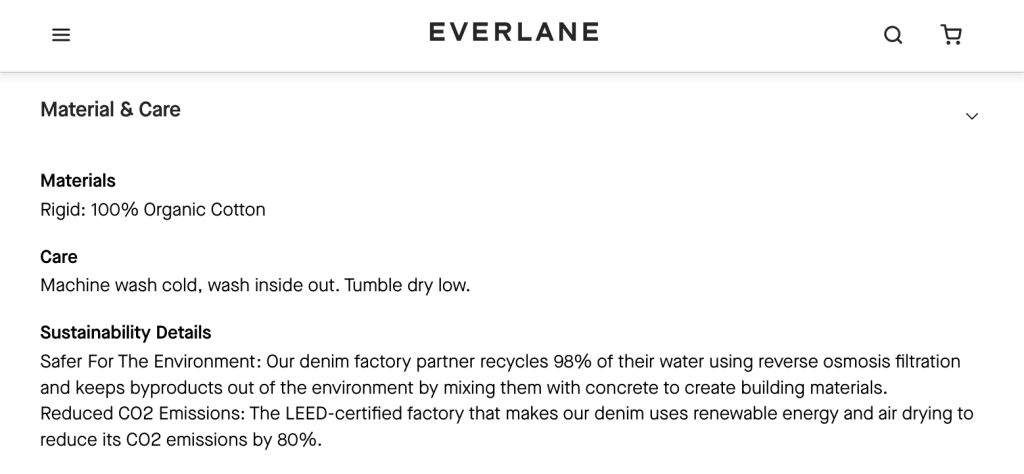
Material quality, social and environmental issues, and a lot of other things can make an impact. Is your leftover material recycled to reduce waste? Awesome. Do your suppliers enforce healthy and humane working conditions? Great. Letting your customers know that kind of information may help you stand out and become someone’s obvious choice.
Your product descriptions are more than just a few words on a page. Along with your product images, they are one of the best opportunities to make a connection and a sale. Giving them the time and attention required to make them great will pay for itself.
Ben Froedge
